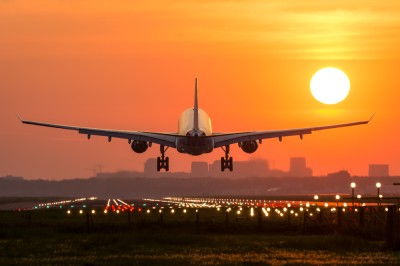
Offshore wind power has become central to the global energy transition, with turbines rising far from shore as symbols of clean energy expansion. Yet beneath the waves lies an equally critical, though less visible, component: the subsea cables that transmit electricity back to the mainland grid. These installations represent not just a logistical challenge but also a rapidly growing market.
According to ResearchIntelo, the global offshore wind cable installation market is valued at approximately $2.6 billion in 2024, with projections showing growth to nearly $9.4 billion by 2033. This reflects a compound annual growth rate of 15.2 percent, a figure considered exceptional for infrastructure-intensive industries. The pace of this growth is not speculative but reinforced by government policy commitments and decarbonization mandates that effectively guarantee demand.
Policy Commitments as Market Catalysts
One of the strongest drivers for the sector is policy certainty. Ambitious renewable energy targets, such as the European Union’s goal of at least 60 gigawatts of offshore wind capacity by 2030, create long-term demand that de-risks investment. When governments set binding climate goals, capital allocation follows.
The offshore wind sector has moved beyond demonstration projects to become a cornerstone of decarbonization strategies. Utilities and investors now treat subsea cables as indispensable infrastructure rather than optional upgrades. This shift ensures both funding and technological innovation continue to flow into the sector.
Advances in Engineering and Installation Technology
Subsea cable installation is no longer a straightforward matter of laying wires on the seabed. The industry now involves highly specialized vessels, robotic trenching equipment, and dynamic positioning systems that allow ships to hold their location within a meter even in adverse conditions.
These advances reduce risk, increase speed, and expand the range of viable sites for offshore wind projects. Robotic trenching tools, for instance, can operate in difficult seabed conditions that once posed insurmountable challenges. As a result, developers can now plan larger and more complex farms in deeper and harsher waters.
A Growing Demand for Integrated Services
The complexity of offshore wind projects has led utilities and engineering, procurement, and construction (EPC) firms to demand integrated solutions. Rather than sourcing individual components, many now prefer turnkey services that encompass design, engineering, installation, and long-term maintenance.
This shift places additional responsibility on installation companies, which must now guarantee performance across decades of operation. Contracts increasingly emphasize reliability and efficiency, linking vendor compensation to long-term project outcomes.
Regional Distribution of Market Growth
- Europe remains the largest market, valued at more than $1.4 billion in 2024, supported by decades of experience and frameworks such as the European Green Deal. Countries including the United Kingdom, Germany, and the Netherlands lead in expertise and project execution.
- Asia-Pacific represents the fastest-growing region, projected to expand at a compound annual growth rate of 19.3 percent, significantly higher than the global average. According to ResearchIntelo, China alone could account for over 40 percent of all new offshore wind cable installations globally by 2033. Taiwan, Japan, and South Korea are also heavily investing, creating a strong growth corridor.
- Latin America, the Middle East, and Africa hold significant offshore wind potential but face challenges including infrastructure gaps, limited financing, and regulatory uncertainty. These regions are expected to progress gradually, following a trajectory similar to Asia-Pacific’s earlier development.
Types of Offshore Wind Cables
Subsea networks involve multiple types of cables, each fulfilling distinct roles:
- Export Cables: High-voltage transmission lines, typically AC or increasingly DC, that connect offshore substations to mainland grids. Demand for these cables is surging as projects move farther offshore, requiring greater capacity and efficiency.
- Inter-Array Cables: Medium-voltage lines connecting individual turbines within a farm to the central offshore substation. These form the internal network, directing generated electricity toward the main transmission path.
- Dynamic Cables: Designed for floating offshore wind platforms in deeper waters, these cables are flexible and durable, engineered to withstand constant motion from waves and currents over decades. They represent one of the key innovations enabling floating wind farms.
The push for higher-capacity projects has also increased demand for cables rated above 220 kilovolts. High-voltage AC and DC cables minimize energy loss over long distances, which is vital when transmitting power from farms located more than 100 miles offshore.
Installation Methods and Challenges
Cable installation techniques depend on seabed conditions and maritime activity. In high-traffic areas, burial is preferred. Specialized plows and remotely operated vehicles cut trenches in the seabed, place the cable, and then backfill to protect against anchors or fishing gear.
Where burial is not feasible, such as rocky seabeds or environmentally sensitive zones, surface-laid methods are used. These cables require heavy armoring, steel reinforcement, and polymer sheathing to withstand external impacts.
Technological innovation extends beyond placement methods. Modern subsea cables often include fiber optic lines integrated within the power cable. This addition provides continuous monitoring of temperature, strain, and acoustic conditions. Real-time diagnostics reduce downtime by identifying and locating potential faults before they escalate into costly failures.
The Central Role of Cable-Laying Vessels
Cable-laying vessels (CLVs) are indispensable for offshore wind projects. These specialized ships can cost hundreds of millions of dollars and are in limited supply. Global availability is a significant bottleneck for the sector, as demand for high-spec vessels far outpaces production.
This shortage inflates charter rates, extends project timelines, and constrains sector growth. Building new CLVs requires years of lead time and heavy investment, making vessel availability one of the most pressing challenges for developers.
Automation, Robotics, and Digitalization
To address installation complexity, companies are investing heavily in automation and digital tools. Remote-operated vehicles handle intricate seabed tasks, while advanced robotics manage cable operations on deck. Artificial intelligence systems monitor installation quality, optimize routes, and enhance safety by reducing human involvement in high-risk activities.
The use of digital twins has become increasingly common for long-term asset management. These virtual replicas of installed cable systems are fed by real-time data from embedded sensors, enabling predictive maintenance and simulations. Identifying faults early minimizes repair costs and ensures more reliable performance over the 25- to 30-year lifespan of a project.
Supply Chain and Regulatory Constraints
Rapid growth brings vulnerabilities. Price volatility in raw materials such as copper and polymers creates financial uncertainty, complicating long-term budgeting. Supply chain pressures for specialized components add further risk to project timelines.
Regulatory inconsistencies across regions present another hurdle. Standards for burial depth, safety protocols, and technical specifications often vary, forcing customized engineering for each jurisdiction. This increases cost and complexity while slowing progress toward global harmonization.
Industry Leaders and Competitive Landscape
The market is dominated by a small number of global firms with significant resources and expertise. Prysmian Group and Nexans lead in high-value segments, particularly export cables. Their strategies emphasize continuous R&D investment in materials, higher-voltage designs, and digitalization, alongside expansion into Asia-Pacific and North America.
Competition also involves strategic mergers, acquisitions, and partnerships, particularly with local engineering firms. These alliances allow global players to adapt to regional requirements more effectively while expanding project pipelines.
Outlook and Long-Term Innovations
The offshore wind cable installation market reflects the broader renewable energy transition. Growth from $2.6 billion in 2024 to $9.4 billion by 2033, as projected by ResearchIntelo, highlights the scale of investment in subsea infrastructure.
The next phase of innovation will focus on ultra-high-voltage direct current (HVDC) systems, advanced materials, and entirely new deployment concepts. As farms are built farther offshore, the ability to transmit power efficiently over hundreds of miles will be decisive.
The market sits at the intersection of deep-sea engineering, high-voltage transmission, and advanced material science. Its success will determine how effectively offshore wind projects contribute to global decarbonization goals.
Source: https://researchintelo.com/report/offshore-wind-cable-installation-market




